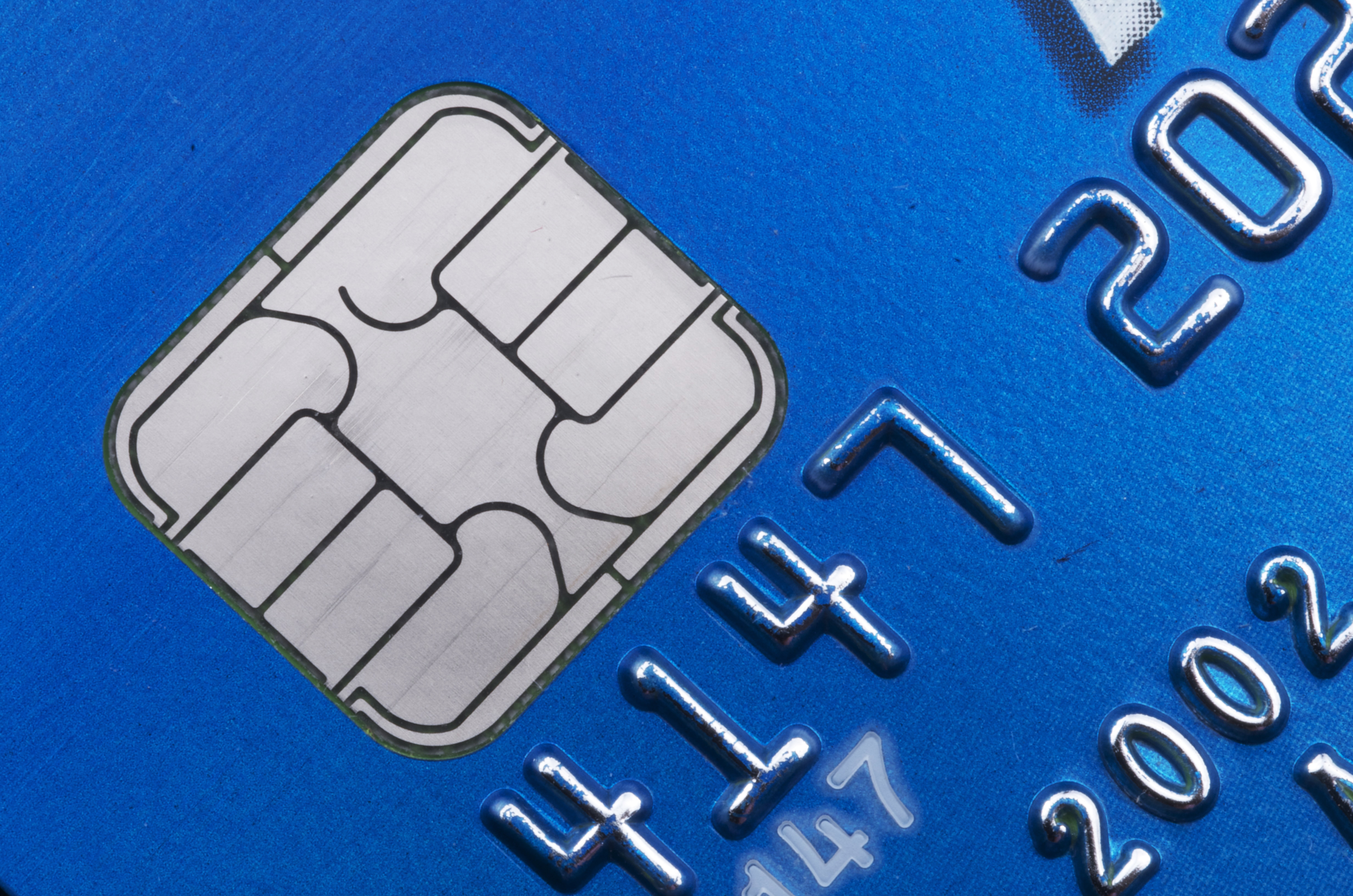Tipping foil is used to enhance and secure financial institutions’ cards. The metallic ribbon is fixed on the card’s embossed characters, helping to bring out the embossed characters even more. This results in clearer alphanumeric characters that are easier to read. This ribbon also improves bank card durability, as it’s designed to resist daily wear and tear and to maintain plastic card quality over the years. They are like the “makeup” for the face of the card. Tipping foil is essentially stamped onto the raised lettering during the in-line vertical personalization process. What is important to remember is that the embossed, foiled letters are now reversed on the sheet of foil they were stamped from, much like a typewriter ribbon. The physical impression left behind on the foil is why it is so critical that tipping foil needs to be destroyed prior to throwing away.
However, this method of creating credit/debit cards is currently being phased out. Many years ago, numbers had to be raised and embossed on the front of the card so when it was run through a card reader, an imprinted image of those numbers would appear on a slip of paper for the customers to sign. But traditional magnetic stripes are well on their way out as “microchip” card readers are becoming the new way to pay. Magnetic stripes on cards contain all of the cardholder information needed to make a purchase or duplicate the card. As technology advances, so do the world’s best hackers, and the magnetic stripe is significantly becoming easier for people to steal data from.
The EMV® (Europay, Mastercard, and Visa, after the three credit card networks that originally developed the protocol) credit and debit cards equipped with computer chips are now the global standard used to authenticate transactions. The data stored in a magnetic stripe is stagnant — it is how it is, and always stays the same. On the contrary, the chip in the card generates a unique code for each transaction and is only used once. If a thief were to copy the chip’s information to validate during a transaction, they wouldn’t be able to. No two transaction codes are ever repeated, so each code becomes useless following the completion of the transaction it represents.
The difference between contactless (RFID) transactions and chip transactions is the method by which the data is transferred. Radio frequency-enabled cards require the card to be within a short proximity of the payment terminal, rather than inserting the card into a cheap reader. EMV chip cards and contactless cards are both more secure than the magnetic stripe. Although, cards equipped with chips do not equate to fraudulent immunity by any means. NFC (Near Field Communication) skimming is where EMV-enabled cards can still be subjected to information being stolen. Near field communication skimmers utilize a wireless technology that allows data to transfer from a mobile device to a card reader within a short distance.
Consumers and organizations alike must properly shred their expired or useless cards that contain PII, whether that be in form of an EMV chip or residual printed tipping foil that still withholds information. Luckily, companies like SEM offer a host of devices specifically designed to ensure everyone has the opportunity to securely take control of their personal data and destroy it once and for all.
The Model DS-400 is one of our top multipurpose turnkey disintegrators. This powerhouse high security model was evaluated by the NSA, listed on the NSA/CSS EPL, and specifically designed to destroy metal cards and license plates. This device can also securely destroy classified paper and CDs as well as other unclassified media stored on smaller forms of e-media such as flash and thumb drives, solid state drives (SSDs), and SIM chips.
The Model 0205NANO is just one part of a revolutionary SSD destroyer duo. The NANO is a mobile crushing solution that was solely designed for the destruction of the world’s smallest forms solid state media. From Compact Flash Type 1 drives to SOIC-8 and SD cards to PLCC-32 drives, the 0205NANO crushes the SSD beyond recovery by the specially crafted and designed internal rotors.
The second solution in the 0205 SSD disintegrator duo is the Model 0205MICRO. Like the NANO, the MICRO was specifically designed to destroy a wide variety of other SSD media such as, cell phones, PC boards, IronKeys, small tablets, and more.
The key to understanding how to destroy something properly is by first having an understanding of how said technology works. A number of our disintegrators would also do the job for destroying tipping foil, EMV chips, SSDs, and various media, at a number of different volumes. We also have devices that can easily destroy tough metal credit cards.
Classified or unclassified, there’s a way to destroy it. Leaving data in a stockpiled room “unsure of what to do” with it is not excusable, and yet many still haven’t educated themselves further to see how their negligence is putting their lives and companies at risk. Mitigate those risks today and be smart when handling personally identifiable information (PII) with Security Engineered Machinery. We’re always eager to help answer questions and can assure you we will help you meet your destruction requirements.


